|
2017 Airshows
Brunswick,
GA B-25s
at Urbana, OH
B-25 Fly-Over the
National Museum of the USAF
SC National Guard Air
and Ground Expo
Dayton, OH
Goshen, IN
Tarkio, MO
Westfield, MA
Wings over Waukegan, IL
Colorado Springs, CO
Wings over the Golden Isles
Airshow Warbird Photo Review
Warbirds at the Brunswick, GA Golden Isles Airport - March 24-26, 2017 - Photos taken
Friday and Saturday, March 24-25, 2017.
Wings over the Golden Isles was
supposed to bring the first airshow to Brunswick, GA in twenty years on
October 8-9, 2916. Hurricane Matthew interfered, and the event was
cancelled. The show promoters were able to recover from this, and
rescheduled for the show on March 25-26.
The Show before the Show.
Friday evening
from the hotel parking lot I was able to watch B-25 Pancito, doing
approaches during pilot training, and the night show. For
most of the night show, the aircraft were too far away, and there was
insufficient light for photos for those that came close to the hotel.
The exception was the F-22 Raptor which
came over the hotel several times. This is a short review of the
show at Brunswick.
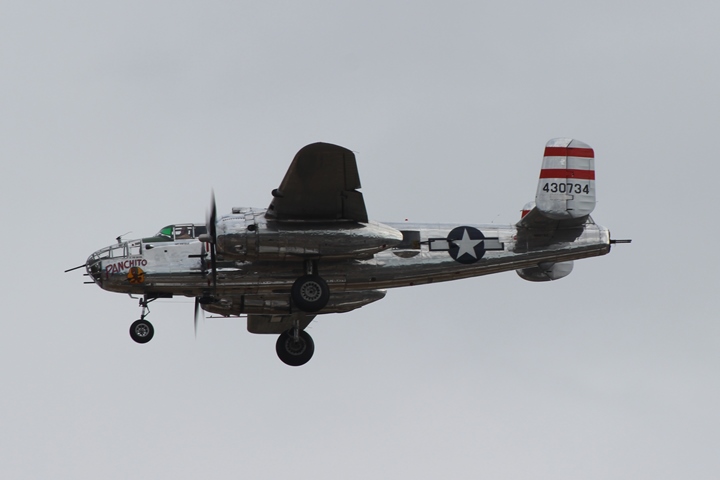
My first warbird sighting for 2017. My hotel was about two miles
west from the end of the runway of the Golden Isles Airport.
Panchito was doing pilot training, and I was able to watch and hear her
come over the hotel about six or seven times before the night show
started.
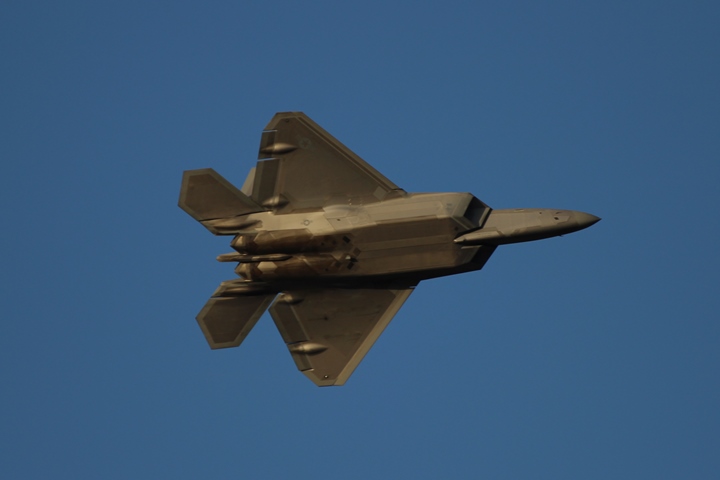
The late afternoon sunlight cast this golden
tint on the F-22 Raptor. It was the first act of the night show.
Saturday Morning Pre-Show
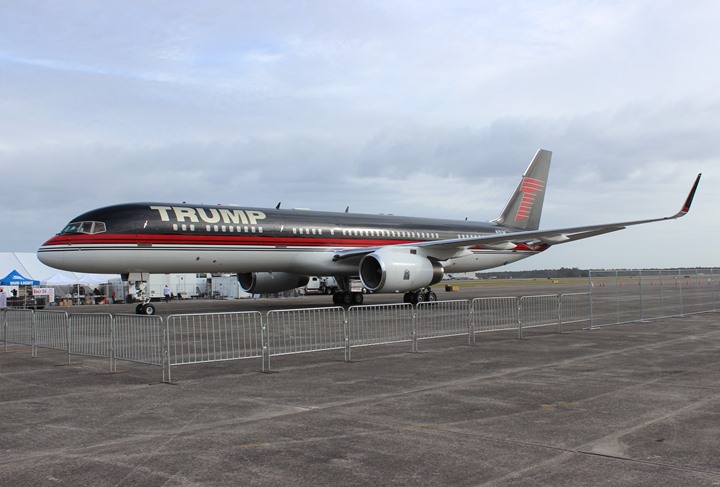
While I have previously seen all of
the acts and warbirds at this show, there is always something new to see. This was a first for me. The clerk at the hotel
told me when I checked in Friday evening that she had seen the Trump jet come over the
hotel just before I arrived. The aircraft was fenced off and never
mentioned by the airshow narrator as something for the crowd to go down
and see.
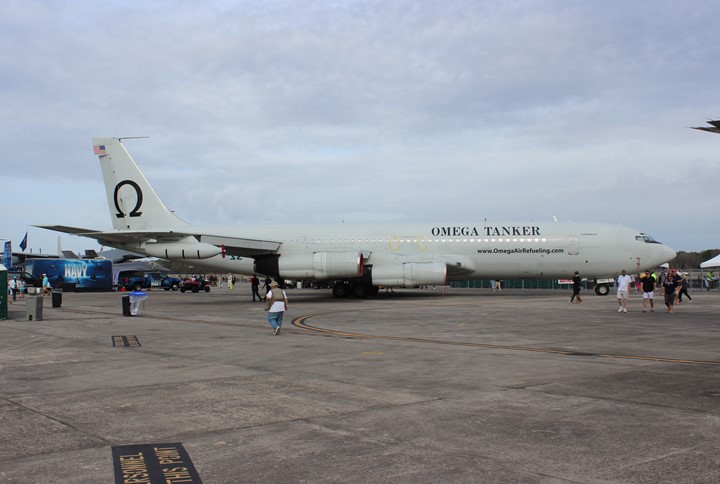
This is another first for me. Omega
Tanker is a company that owns two Boeing 707s and one McDonnell-Douglas
DC-10. They provide refueling not only for the US Navy, but the Royal Air
Force, Royal Australian Air Force, and the Canadian Forces. I did
not realize the US Navy utilized a non military entity to provide air to
air refueling.
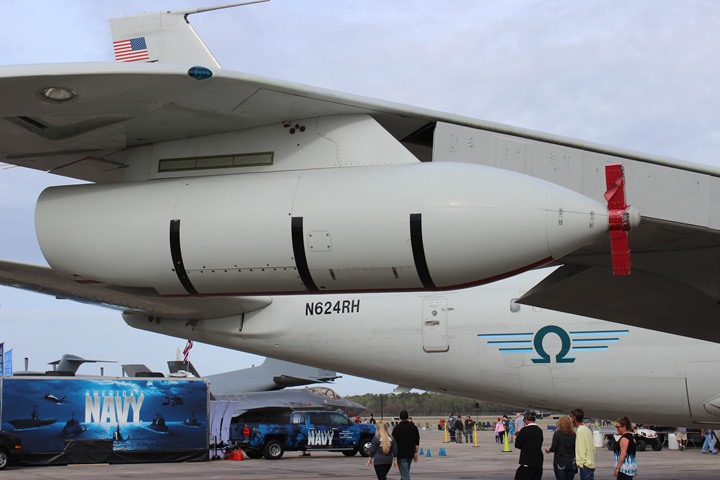
On April 22, 2015, the other Omega Tanker
707 did the first air to air of the Northrop-Grumman X-47B.
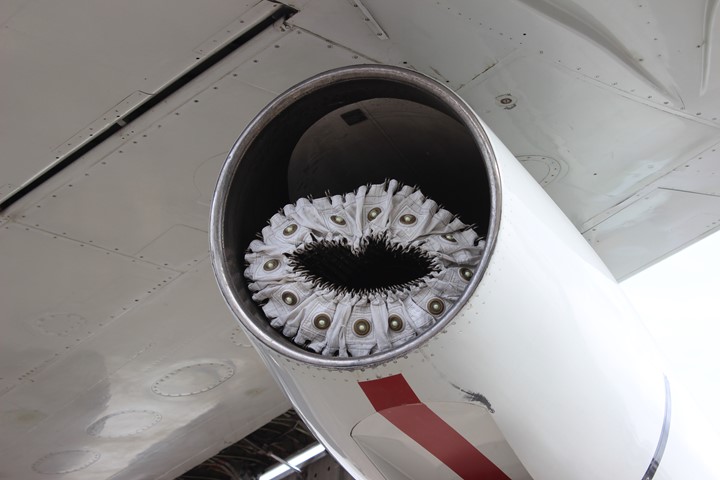
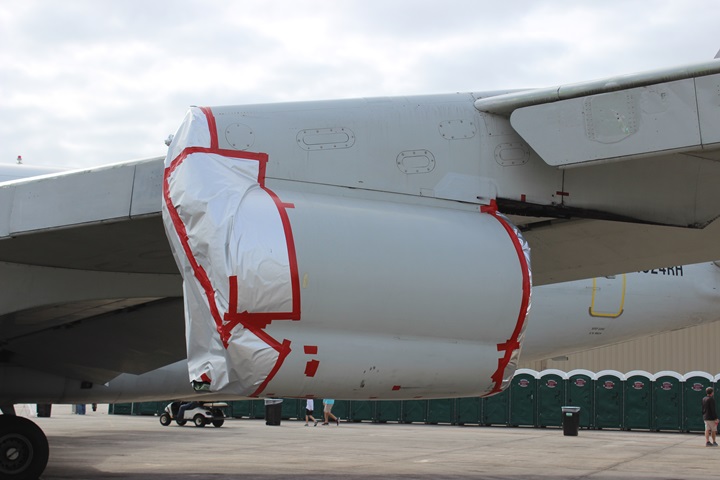
Omega Tanker is based out of San Antonio, TX.
The airshow was able to take advantage of the fact this 707 was at the
airport for an engine replacement, and put on static display.
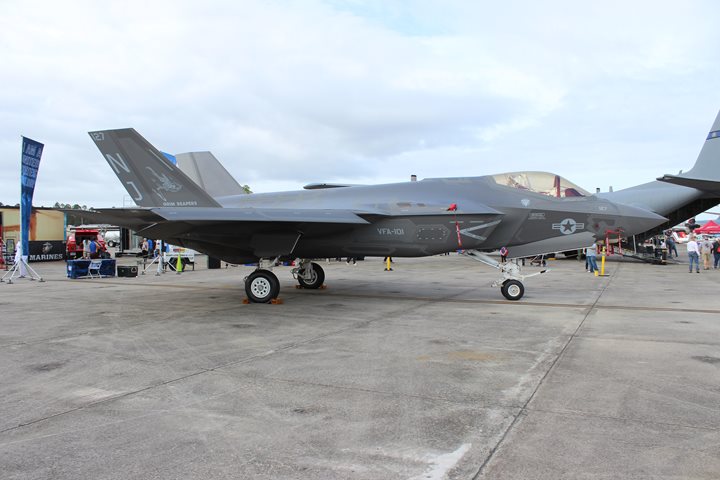
This is only the second F-35C I have
seen at an airshow. VFA-101 was reactivated on May 1, 2012 at
Eglin AFB as a F-35C Fleet Replacement Squadron. (I know this was
flown in, but whenever I see an F-35 on static display, I always wonder
whether it was trucked in during the middle of the night, and mechanics
put the wings on before it was put on display.)
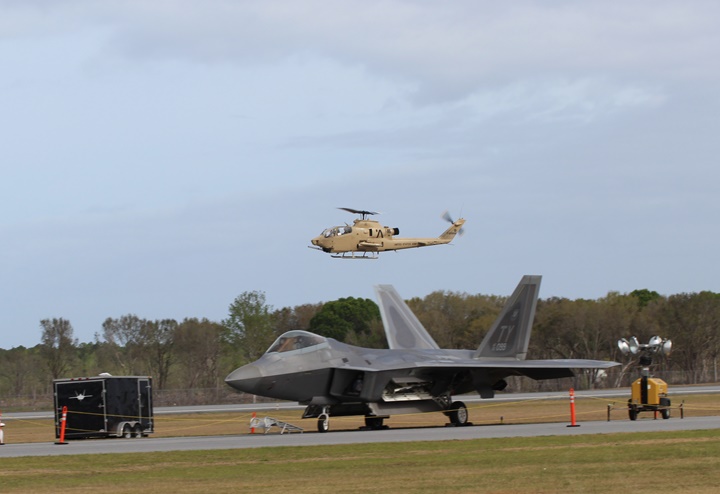
The Sky Soldiers were on hand and giving
rides in this AH-1 and a UH-1.
Show Time 2017!
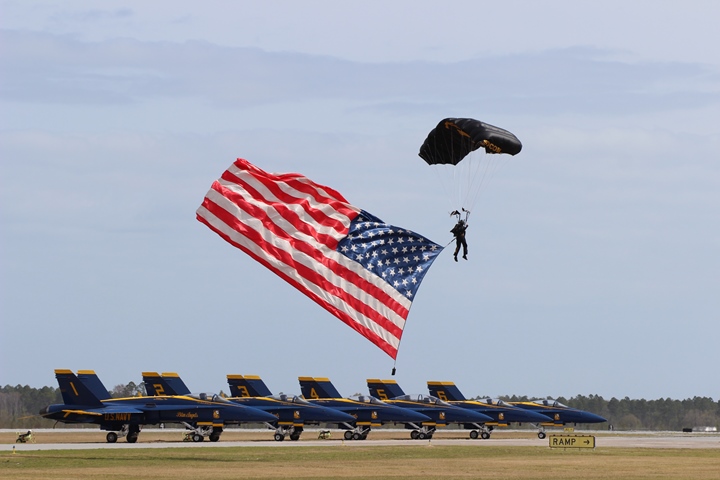
The First Flag Jump of my 2017 Airshow
Season! The flag jump was performed by the USSCOM Para-Commandos.
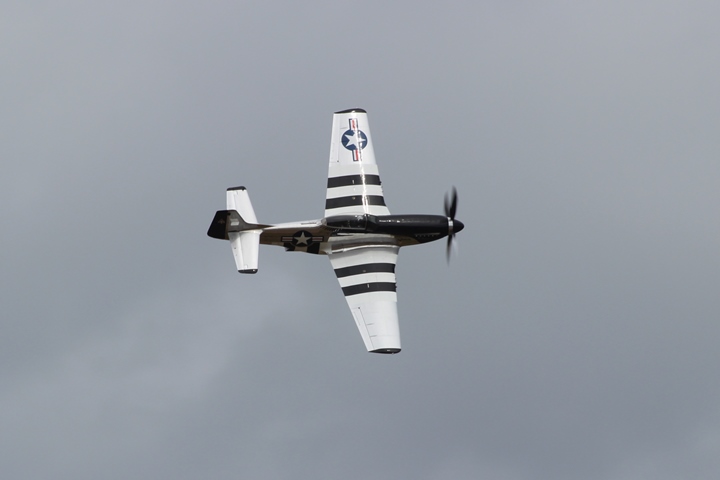
Scott Yoak in his P-51 Quick Silver was the
first act after the flag jump. A very nice warbird start for the
2017 airshow season.
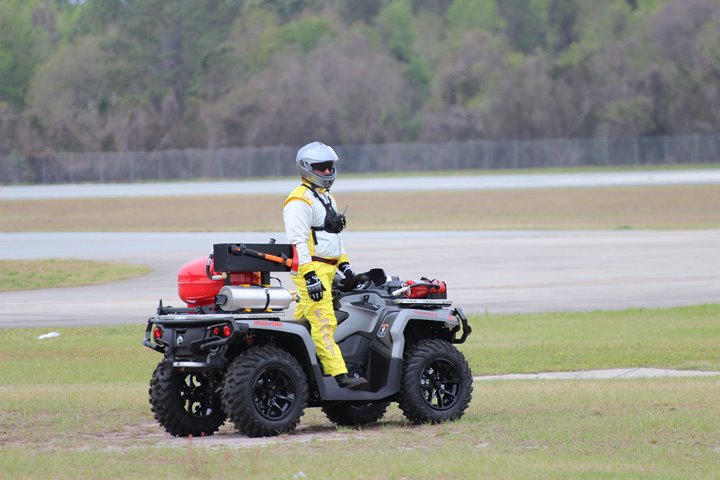
This was also something I had never seen at
an airshow, a first responder on a quad. All airshows have fire
trucks and emergency vehicles at the ready in case of a situation.
Although they are at the ready at the airport, they do
take some time to get to an emergency. I unfortunately saw how
painfully long it took fire trucks to get to the accident at the 2012
Dayton Airshow. I like this concept! In case of an accident,
the quad can be on the scene before the fire trucks even start rolling.
This first responder spent the entire show on station, watching for any
accident. Here he is watching Scott Yoak's roll-out after landing
in the P-51.
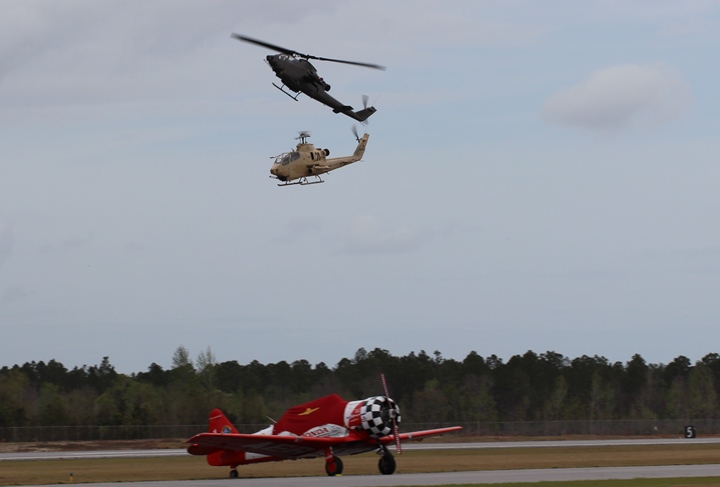
The Sky Soldiers did their AH-1 performance
with two Cobras. Originally, the Cobra act was a four ship routine.
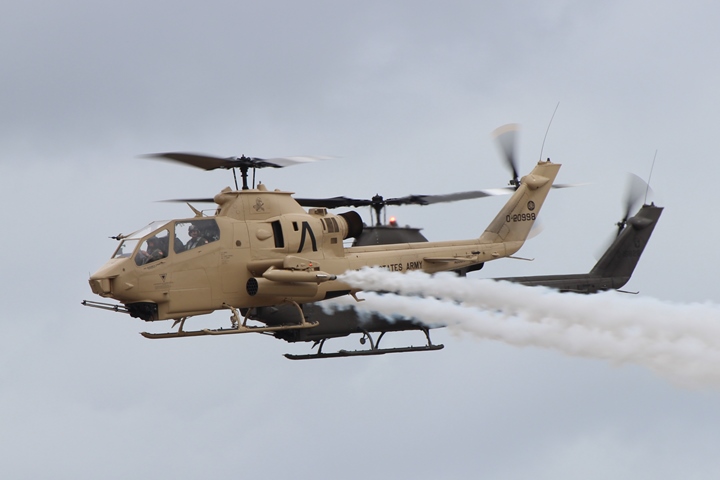
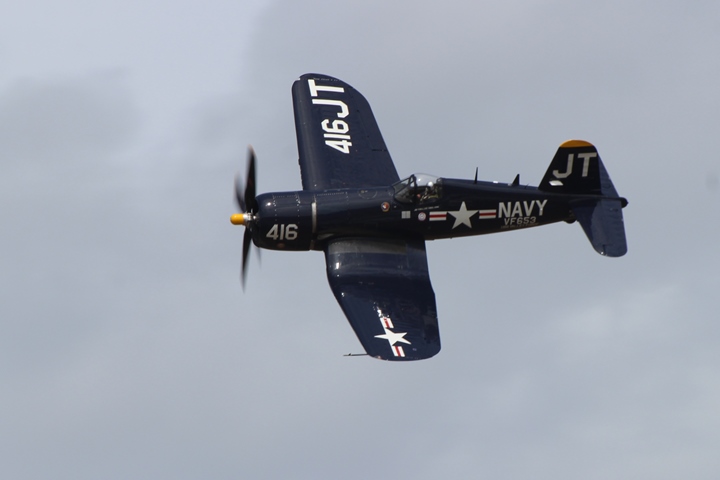
Jim Tobul from South Carolina performed his
routine in his 1945 F4U-4, the "Korean War Hero." This Corsair flew combat missions
in Korea from both the USS Boxer and the USS Valley Forge.
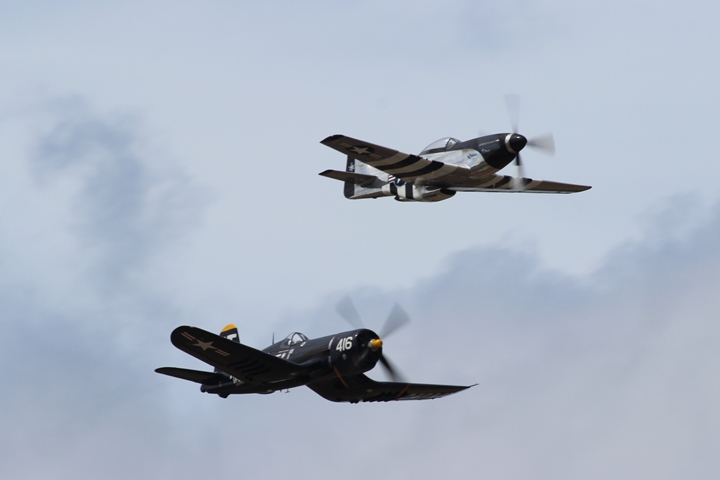
The nice part about having Scott Yoak and
Jim Tobul at the same show is they fly together, and have a routine
called "The Class of '45."
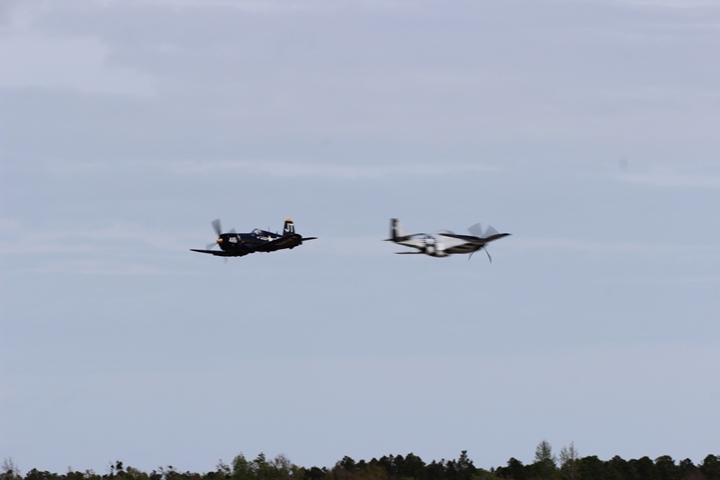
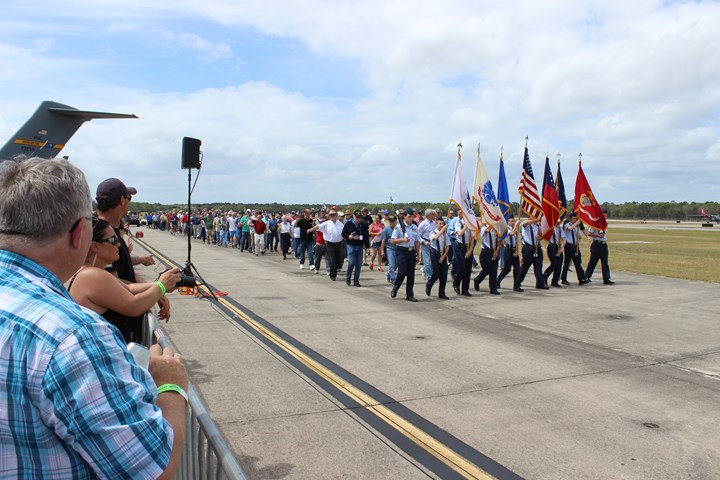
Another first for me. A veterans'
parade down the taxiway.
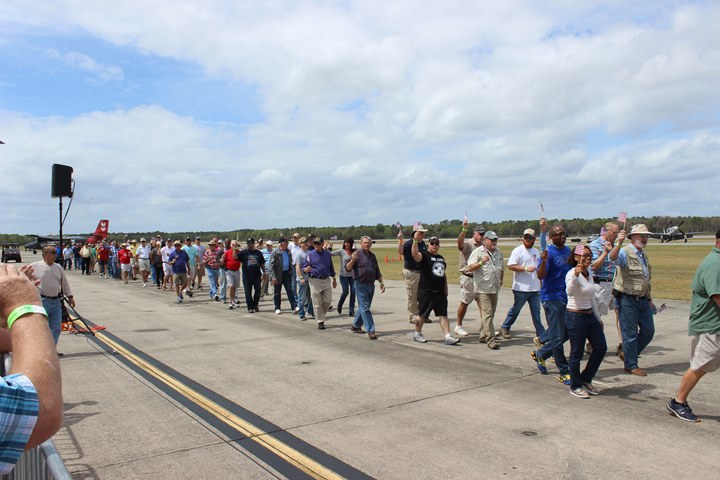
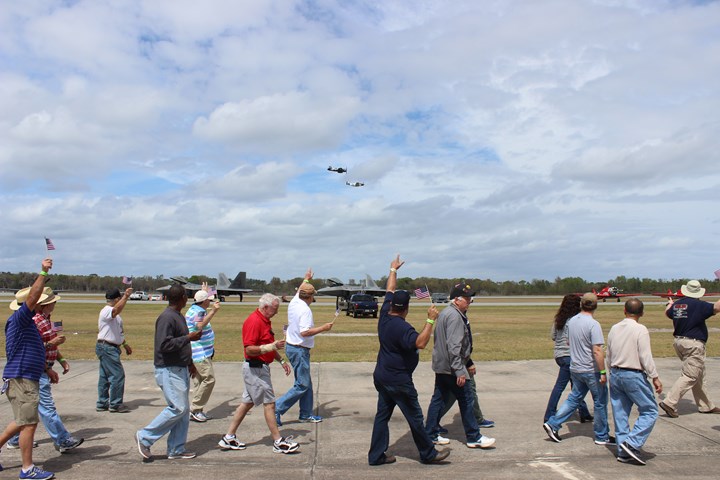
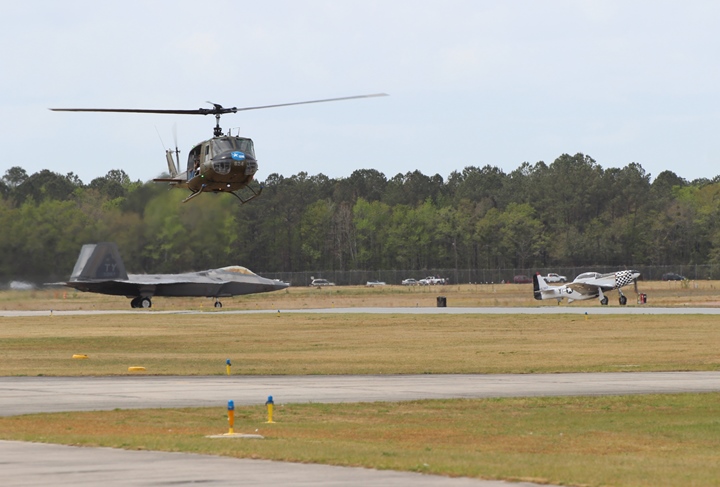
Time for the Raptor! The Huey is
coming in to land and shut down during the F-22 demonstration and
Heritage Flight. The Huey and Cobra rides ran continuously during
the show with the exception of the Raptor/Heritage Flight routine, The
Blue Angels, and when there were jumpers in the air. No propellers
or rotors are allowed to be turning during parachute drops.
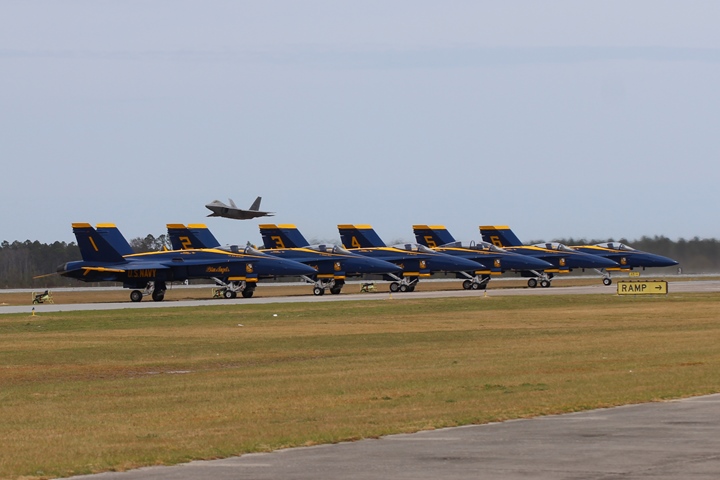
Most of the time the crowd watched the show
sitting down. Not with the Raptor. Everyone was standing to
see the F-22 perform for the first time at Brunswick.
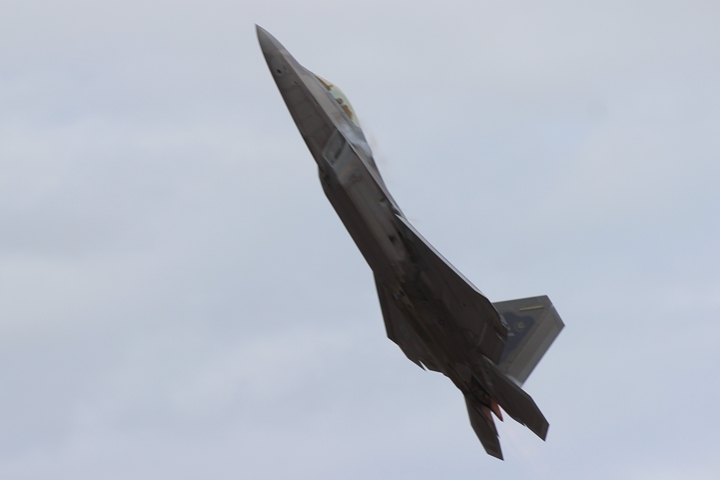
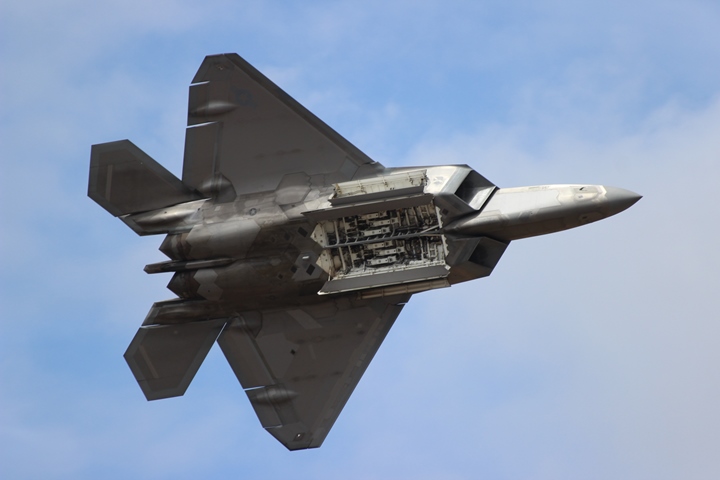
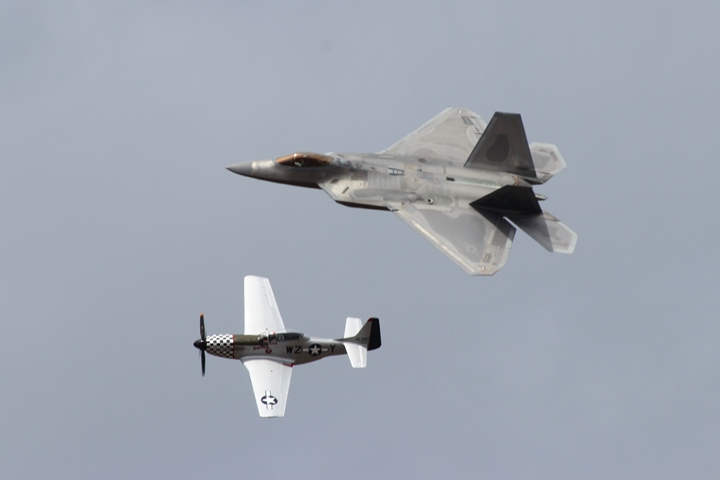
The crowd loved this pass, and cheered as
they went by!
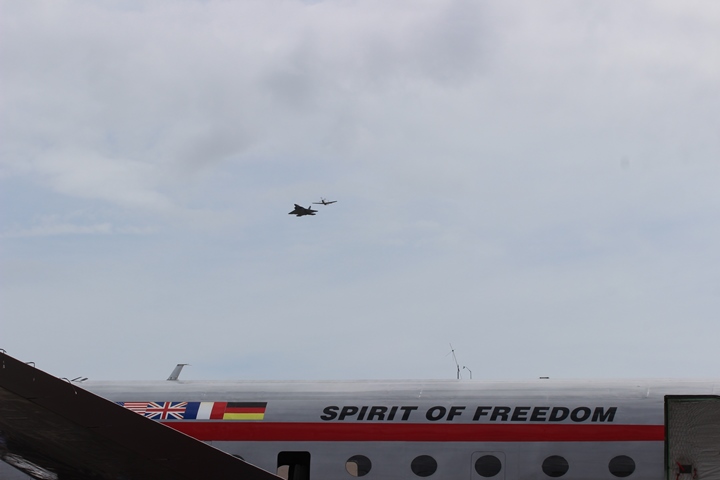
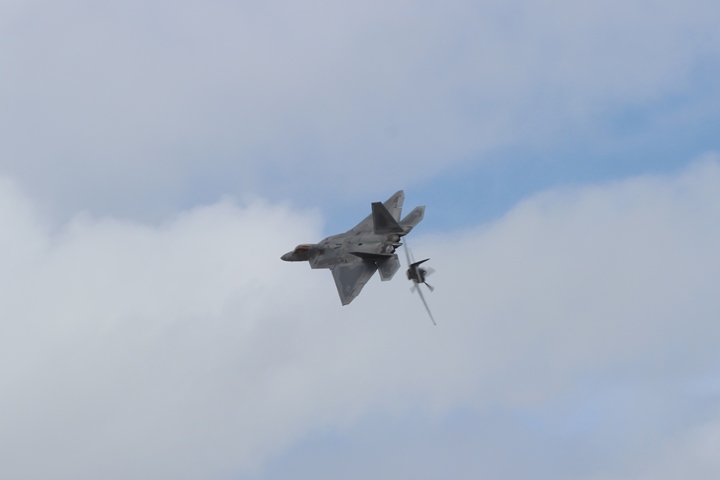
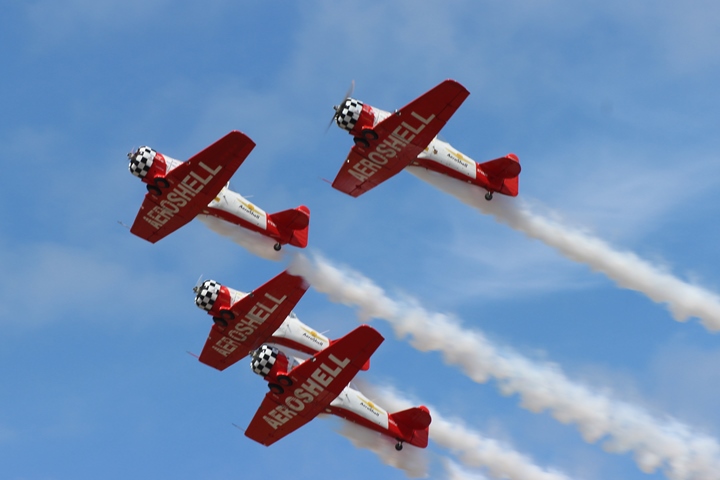
By the time the Aeroshell team flew, the
clouds had cleared out and the blue sky was back, making for some
colorful photos of the team.
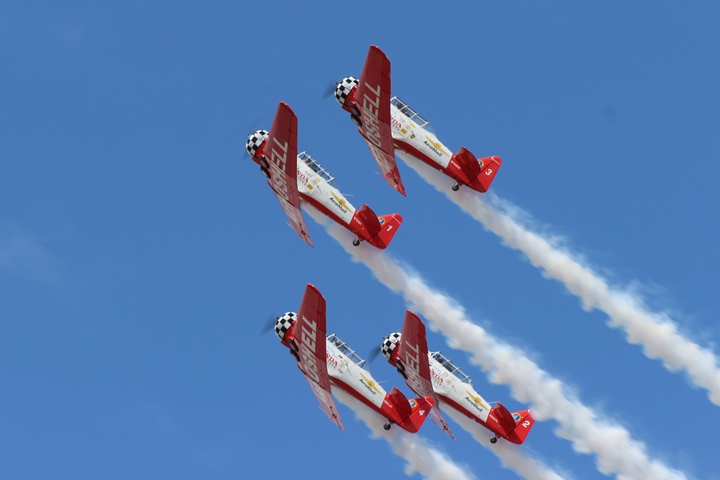
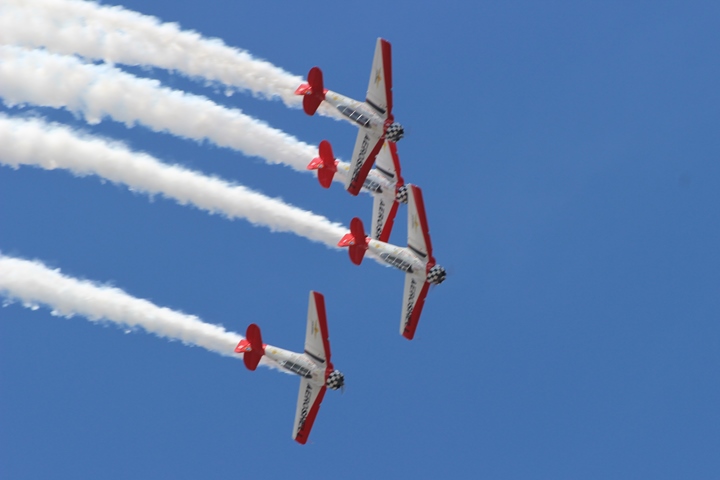
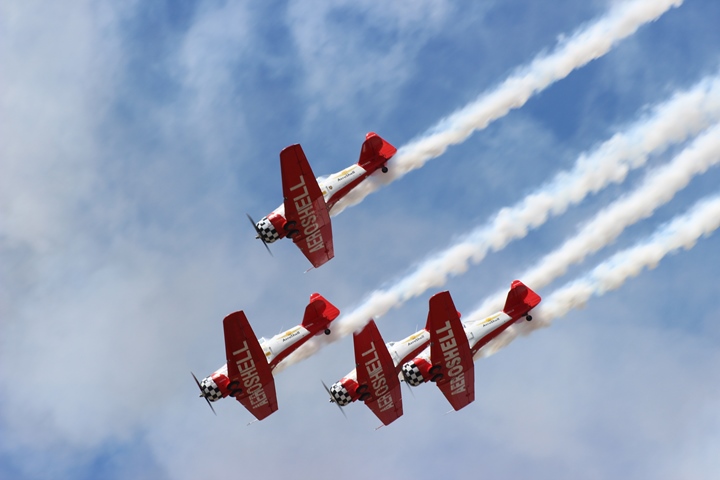
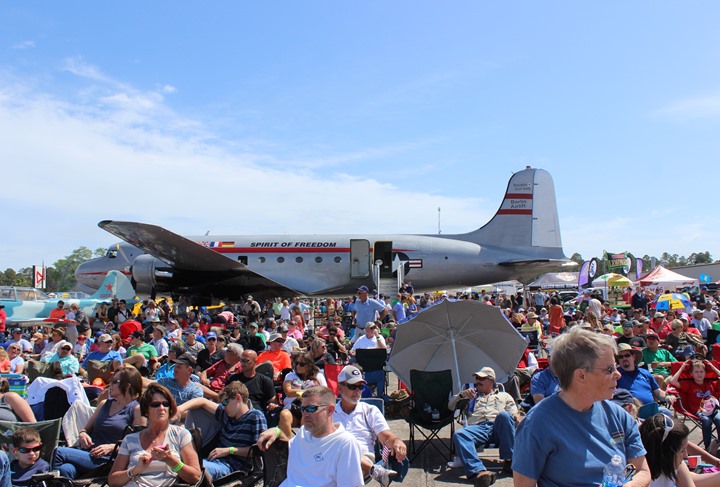
How do I get out of here?!?! It was
time to leave before the Blues flew to beat the traffic as I needed to
be in Nashville the next morning. I still remember watching the
Blue Angel show at Cherry Point in 2016, and then taking three hours to
get out of the parking lot.
Side trips on the way to the show.
My shortest route to the show was 860 miles. To
drive all that distance and back for a one day airshow did not make a
lot of sense. I added a couple of extra days, and visited some
places that I have normally driven by on my way to Florida vacations
when I come through South Carolina and eastern Georgia.
Ninety Six National Historical Site, Ninety
Six, SC
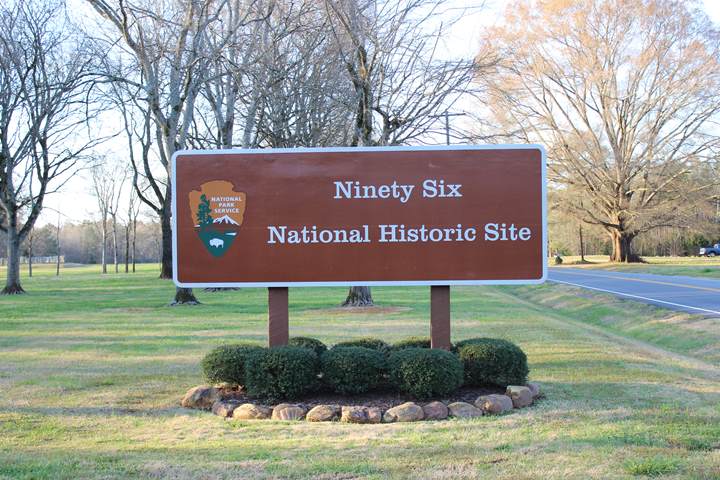
Ninety Six is definitely off the beaten path,
and not the easiest to get to, as it is the back country of western
South Carolina. It is well worth the time spent. Ninety Six
is the location of two battles during the American
Revolution. There is still a town of Ninety Six two miles to the
north of this location, back up the road, and in the opposite direction of
this photo. The original town of Ninety Six is about a quarter of
a mile to the left of this
location of the sign in the photo. The origin of the
name Ninety Six remains unknown. Most historians believe it came about
as the original inhabitants thought it was 96 miles to the nearest
Cherokee village of Keowee, which it is not.
There is a lot to see here. For
brevity, I will only
concentrate on the star fort and the surrounding battle area, when from
May-June 1781, Patriots and Loyalists fought for control of the
South Carolina back country.
As can be seen below, this is a truly
important, albeit little known, historic location. The historian
of any type will find it well worth getting off the beaten path of the
Interstate to spend time at this most impressive American
Revolutionary War battle ground.
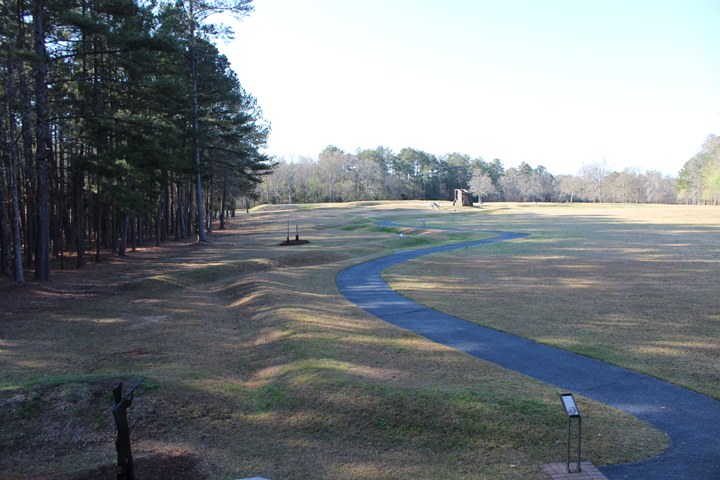
This photo was taken from a ten-foot tower
located at the bottom of the next photo. In the immediate
foreground is the start of the trench dug by the Patriots to approach
the Loyalist fort in the background. The trench has a zig-zag
pattern as it approaches the fort. In 1781 the trenches were
considerably deeper than today. They would probably have been six
feet deep, to protect the Patriots from Loyalist musket fire.
The average soldier in 1781 was five foot, five inches tall.
Note that I am using the terms Patriot and
Loyalist, because the Revolutionary War in South Carolina was a civil
war, with neighbor fighting neighbor, depending on which cause they
supported. In many cases persons did not want to take sides.
They
just wanted to be left alone, but still got sucked up into taking one
side or another. While there
were American and British generals leading both sides, the main forces
were militias that had been formed. The British and Continental
armies were not involved in this particular case.
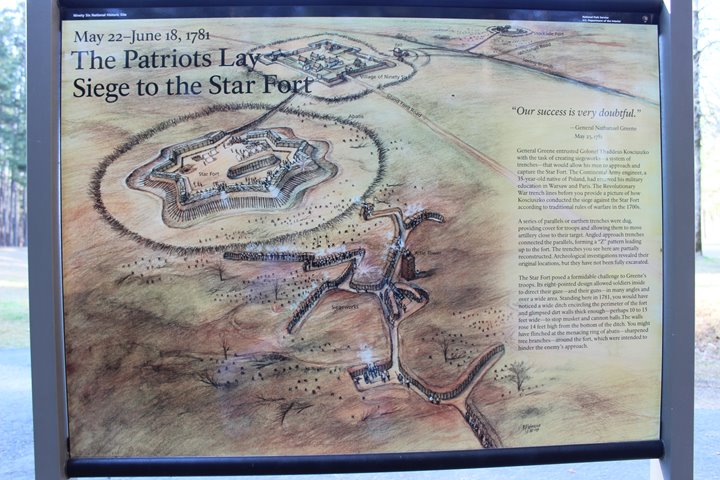
At the top of the photo is the original town
of Ninety Six, surrounded by a stockade. A communications
trench runs between the star fort and the town, and then out to the
stockade fort in the upper right of the photo. According to one
source, this trench was eight feet deep and covered with timbers.
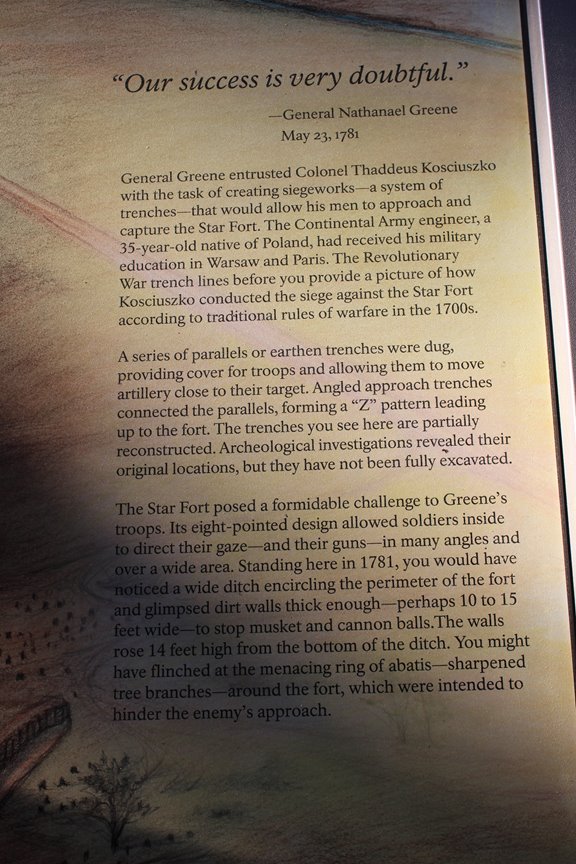
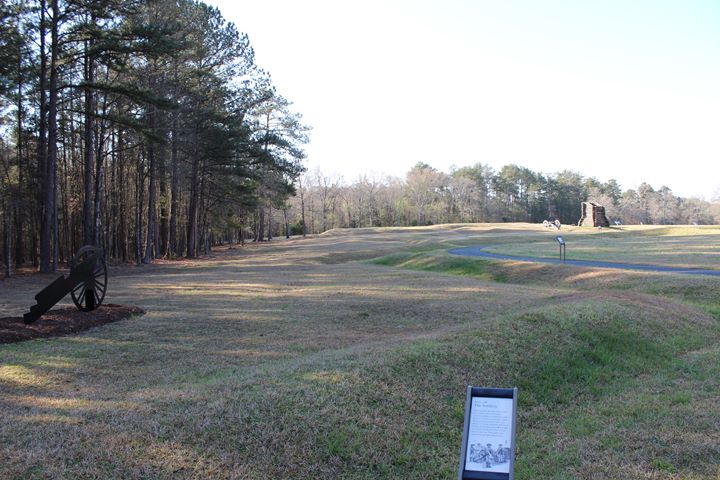
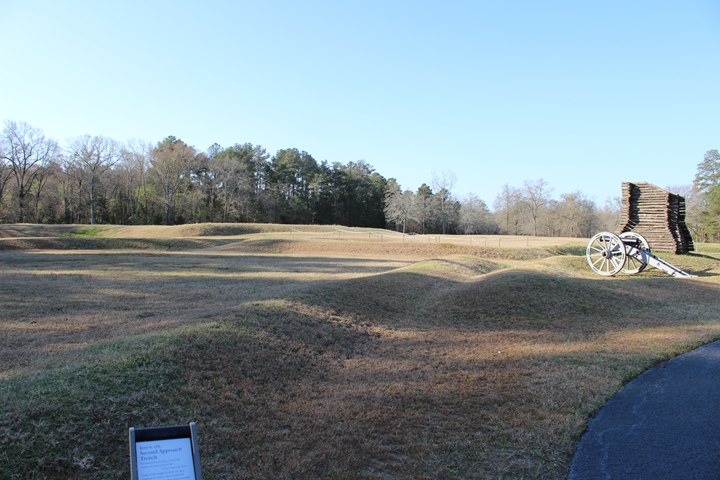
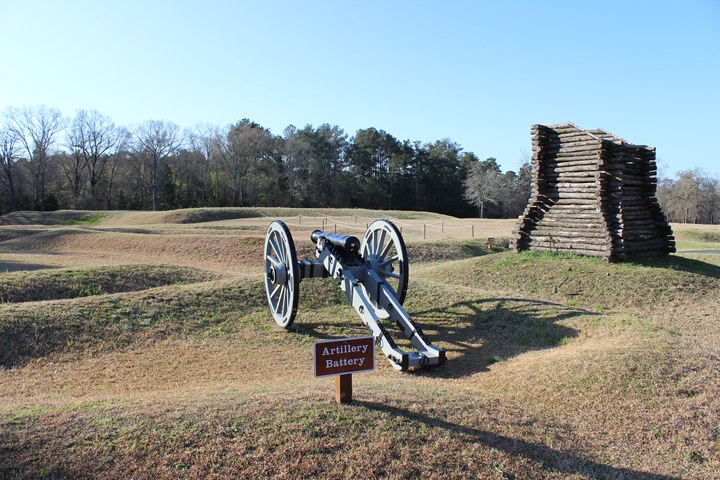
The original tower was thirty feet tall, and was built
in one night under the cover
of darkness. From the tower,
the Patriots could fire down into the fort. The Loyalists then
built up the height of their walls facing the tower with sandbags.
The remains of the Patriot trenches are most evident 230 years later,
although time and erosion have taken their toll. The star fort has
the higher walls in the background.
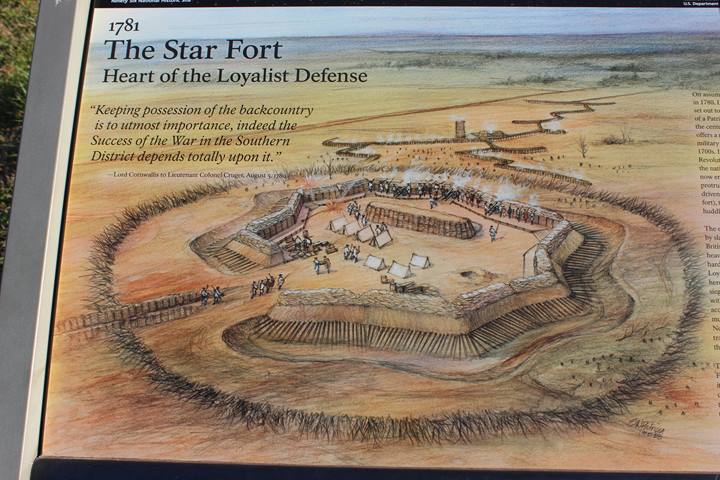
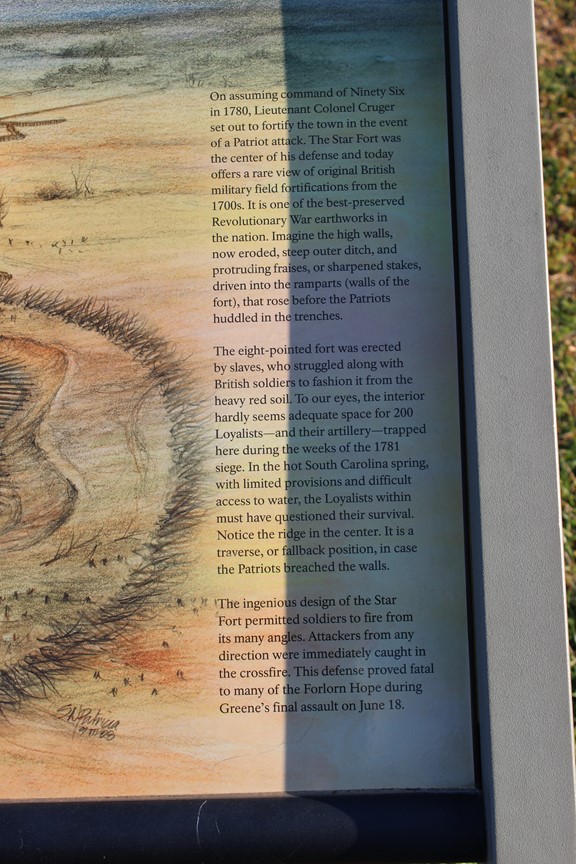
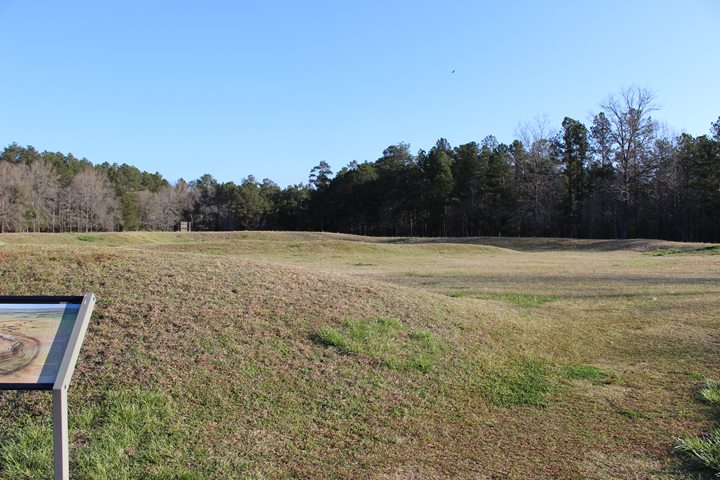
This is the opening of the Loyalist star
fort. It was out of this opening that Loyalist militia sallied
during the last battle for the fort that defeated the Patriots.
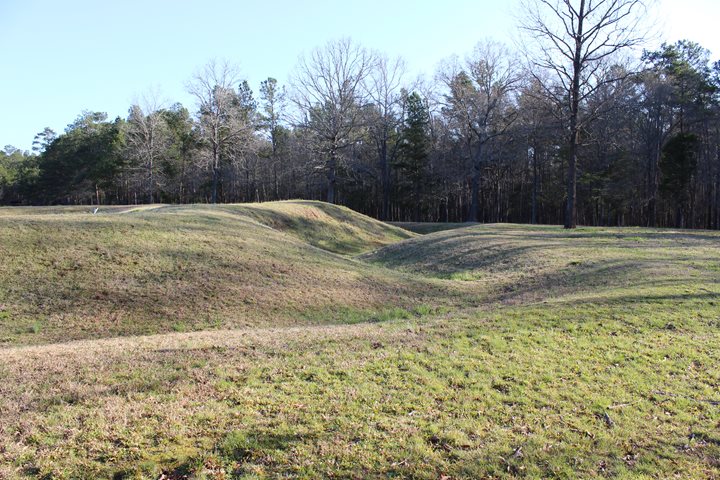
On the left is one wall on the east side of
the star fort. In 1781 the wall was fourteen feet from the bottom
of the trench to the top of the wall.
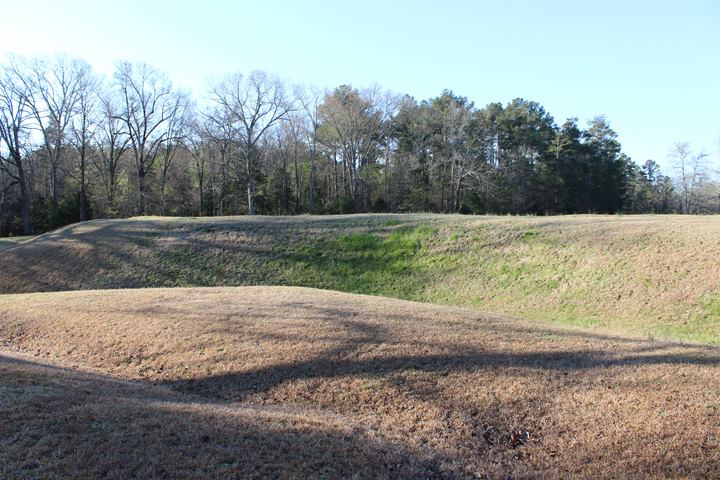
This photo was taken from just behind the
closest Patriot trench to the star fort in the background. With a
Loyalist relief party that was twice the size
of the Patriot force at Ninety Six on the way from Charleston, General Greene ordered 50 soldiers
to undertake a frontal assault at noon on June 18, 1781. From the
trench in the foreground, they went over the top and made a frontal
assault on the fort. It should be noted that the fourteen-foot
walls were not grass covered but loose dirt with pointed logs dug into
them. As the Patriots were attacking and pulling down sandbags,
Loyalist troops sallied out of the opening on the other side of the
fort, and came around the ditch from both sides to attack the Patriots
with a bayonet charge. After hand to hand combat, 40 of the
Patriots lay dead or wounded in the trench directly in the center of the
photo. General Greene then called off any further attacks, and retreated. Afterwards the Loyalists burned the town and
retreated to Charleston, which was more defensible.
South Carolina Military Museum, Columbia,
SC
The South Carolina Military Museum is the fourth largest National
Guard Museum in the country, and is currently located in two former
motor pool buildings. The museum plans to add two more
buildings by the end of 2017. The museum tells the story of both
the Army and Air National Guard in South Carolina, starting from when the
state was a colony. Below is a short overview of what can be seen
in the museum.
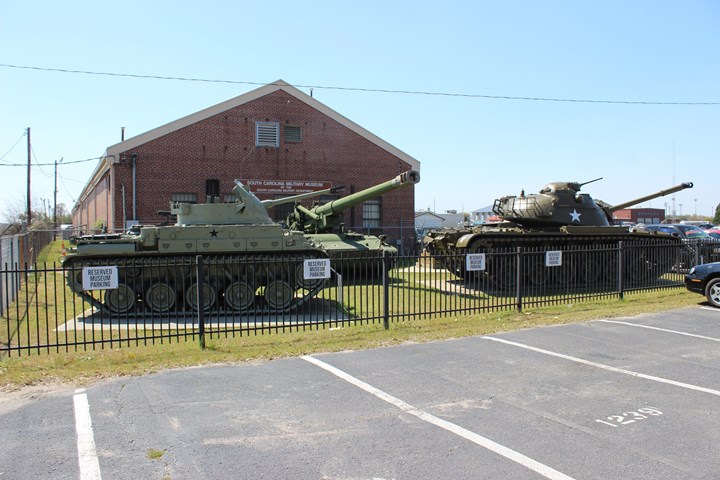
Outside the museum are several armored
fighting vehicles. A M42 Duster is on the left and a M48 Patton
tank on the right.
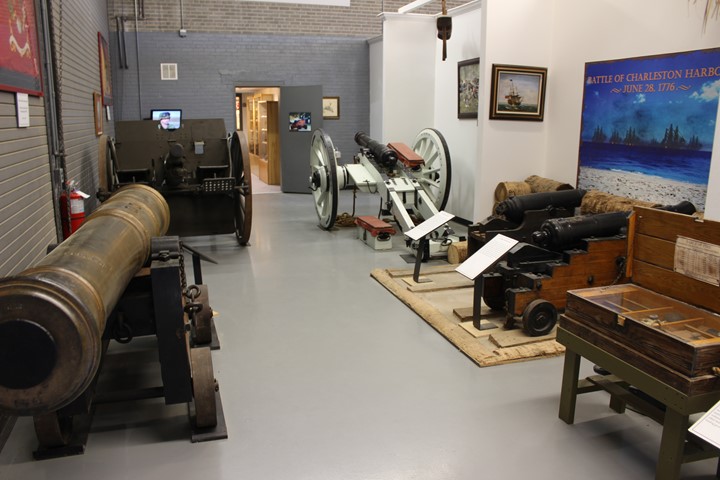
This is the Artillery Hall in the museum.
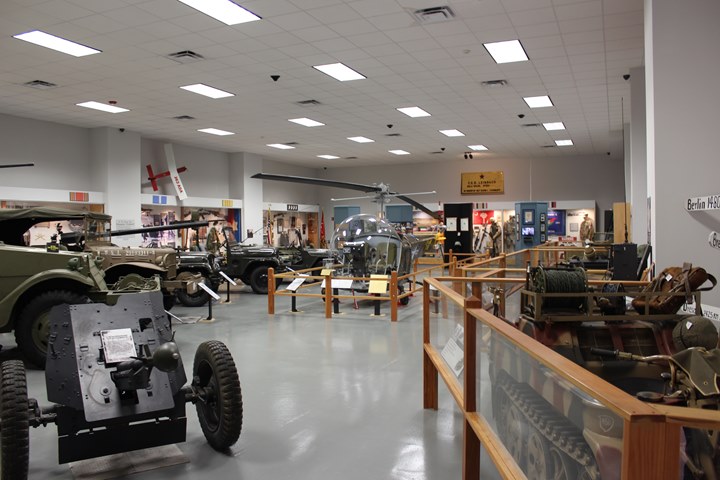
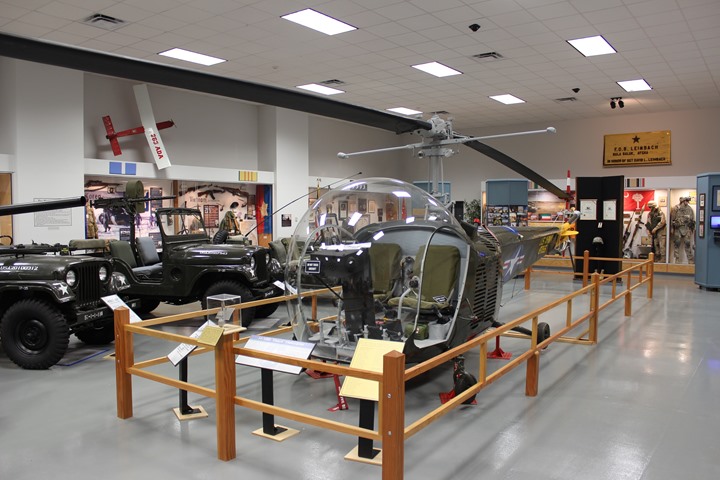
Every museum has something unique. For
the South Carolina Military Museum, it is this H-13B, the first
production helicopter purchased by the US Army. This is serial
number 1.
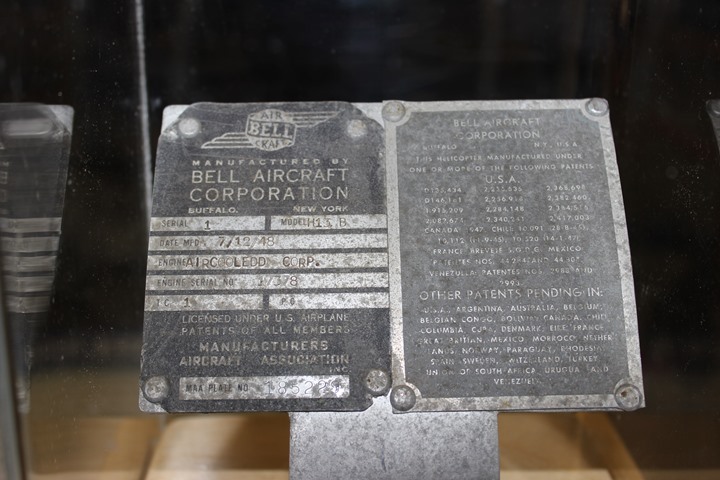
North Charleston and American LaFrance
Fire Museum, North Charleston, SC
My visit to this museum may have been very fortuitous. The
museum has the largest collection of American LaFrance fire apparatus in
the country. All of them are still owned by American LaFrance,
LLC, and are on the second five year loan with the museum that
expires in April 2017. The building was built especially for
the American LaFrance collection when the company moved to the area, and
built a plant 20 miles from the museum. It turns out, after being
owned by several different companies, and then a private Charleston area
financier the past ten years, American LaFrance closed its
doors for good in 2016. Therefore, the collection at the museum is
subject to part of the liquidation and sale of the company's assets.
While the city of North Charleston has first refusal on the purchase of
the $3 million American LaFrance collection, it remains to be seen
whether the American LaFrance fire apparatus stays at the museum after
April 2017.
Below is a short review of the Museum.
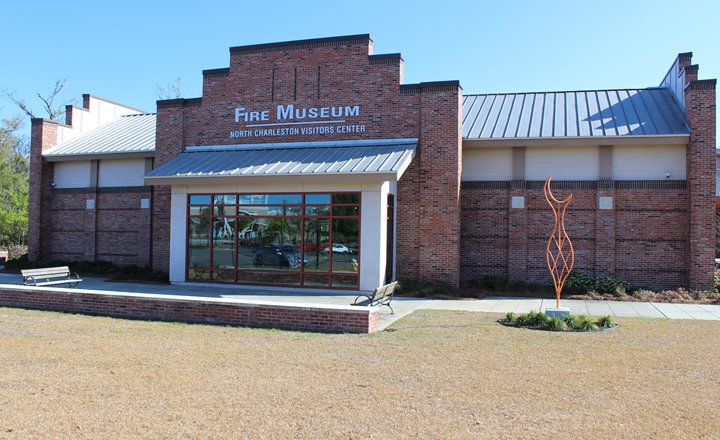
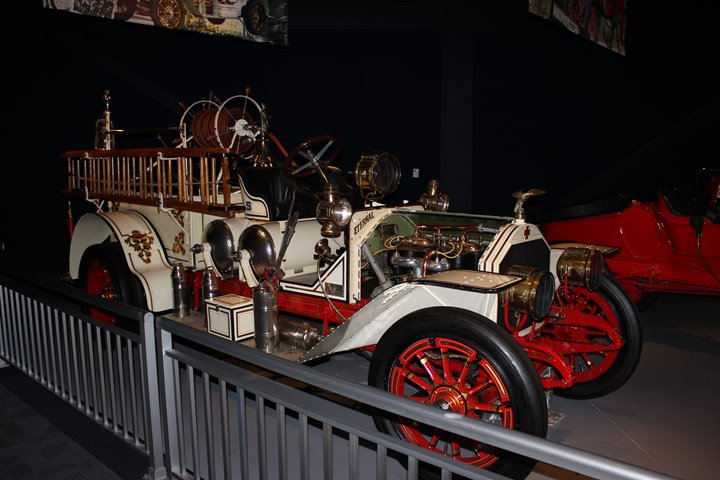
The North Charleston Fire Museum has an
excellent collection, but has decided to have limited light only over
the displays. For good photos, one needs a tripod for proper
exposure in the limited light. I didn't have a tripod with me, so
I had to use limited flash. This is a 1911 American LaFrance, the
oldest by the company in the museum.
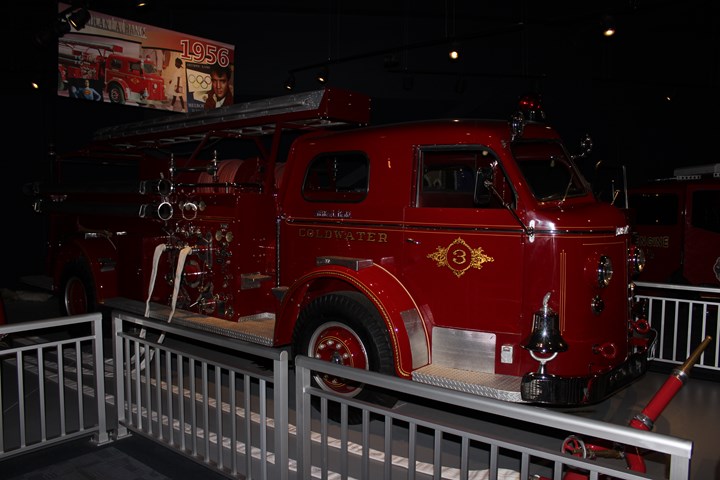
This is a 1956 American LaFrance.
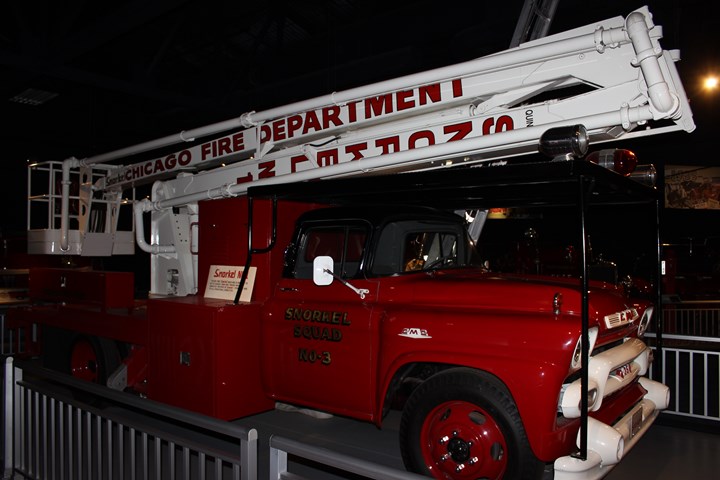
Even though I came to see the American
LaFrance collection at the museum, this was the most interesting display
for me. This is the original 1958 Chicago Fire Department Snorkel
No 1. All snorkels since then derive from this one. The
mystery is why the first snorkel is on No. 3 truck.
St. Marys
Submarine Museum, St. Marys, Georgia
This museum was started 20 years ago by a former Trident submariner.
Not far away is the Kings Bay Submarine Base, which is the home for
eight Trident nuclear submarines. The museum is small, but is
directly across the street from the Cumberland Island National Seashore
Visitor Center. St. Mary's is a tourist town, and the location of
the museum places it in a good location to bring in tourists.
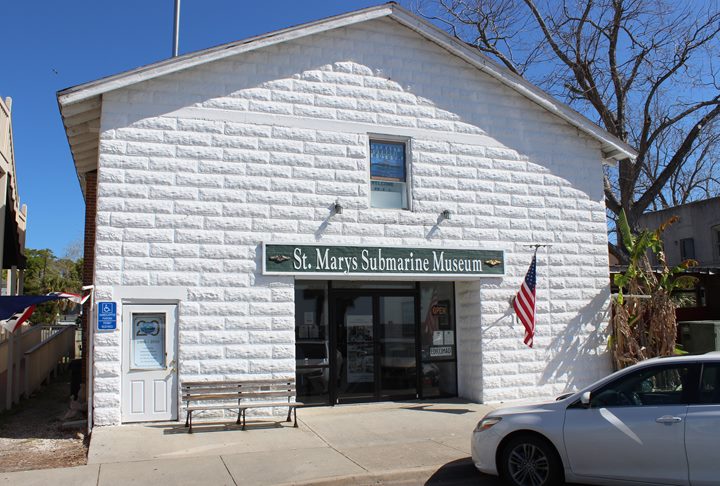
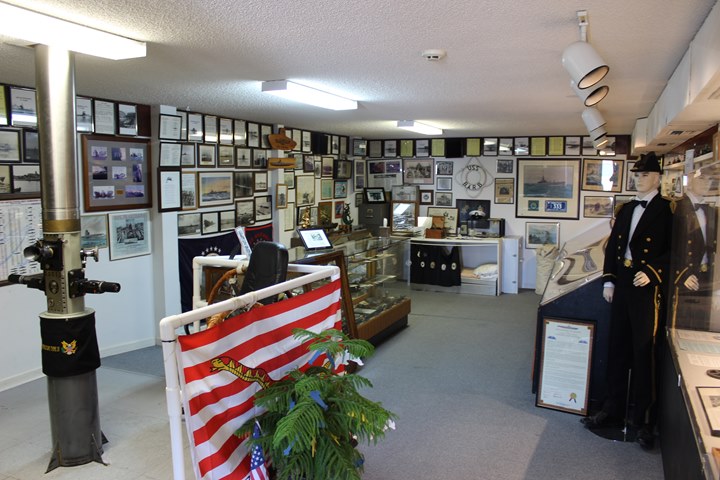
The museum is not all that large, and most
of the display items are plaques and photos. This is the first
floor portion of the museum.
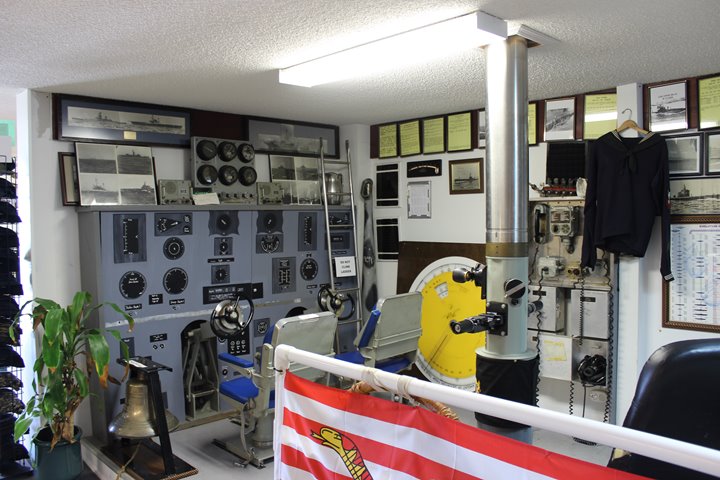
The periscope works and the area around the
neighborhood can be seen from the eyepiece.
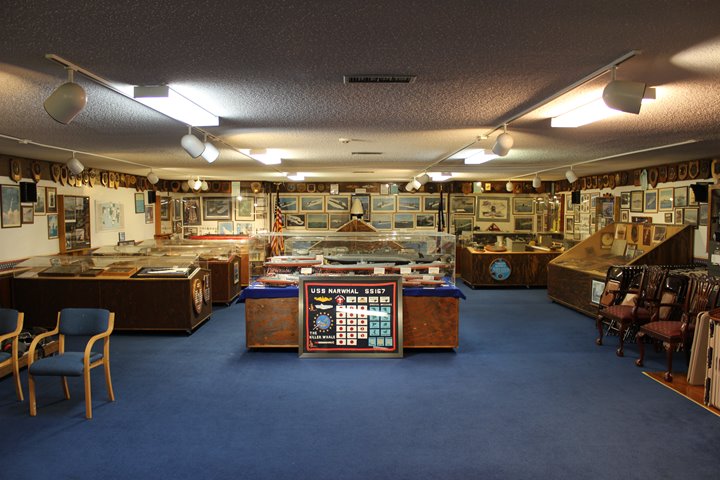
This is the second floor.
Fort Frederica National
Monument, St. Simons Island, GA
This visit to Fort Frederica was a major
reason to do the Golden Isles Airshow. Fort Frederica has been on
my list for quite some time, but there was never a good time to stop
while on the way in route to or back from Florida with family onboard.
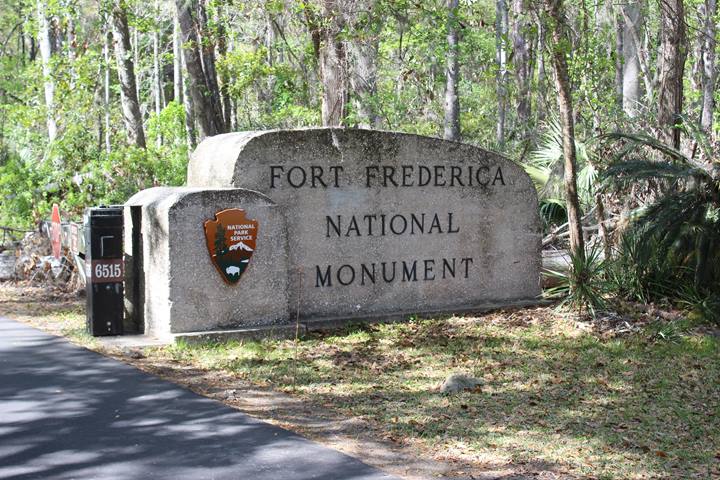
Fort Frederica and the associated town of
Frederica date back to 1736.
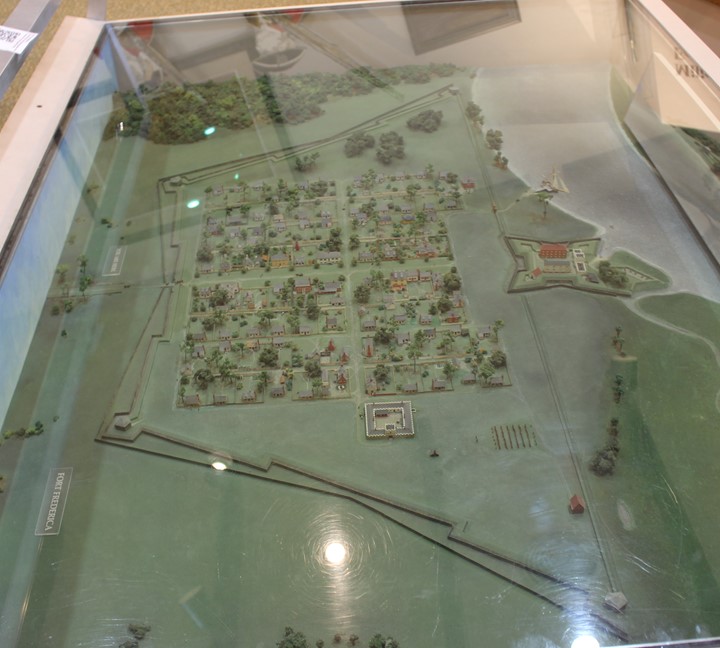
This model of the town and fort is in the
visitor center. The orientation is looking from the north to the
south with the Frederica River on the right or the west. The
entire town was surrounded by a stockade with the earthen star fort
along the river. The square building at the bottom of the town or
north side is the soldiers' barracks. Part of the guard tower on
the building still stands today.
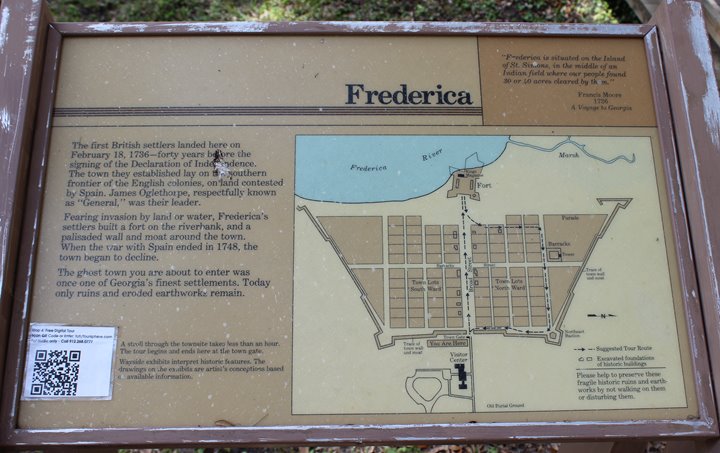
In this orientation one is looking east to
west. The main street down the center of town is Broad Street.
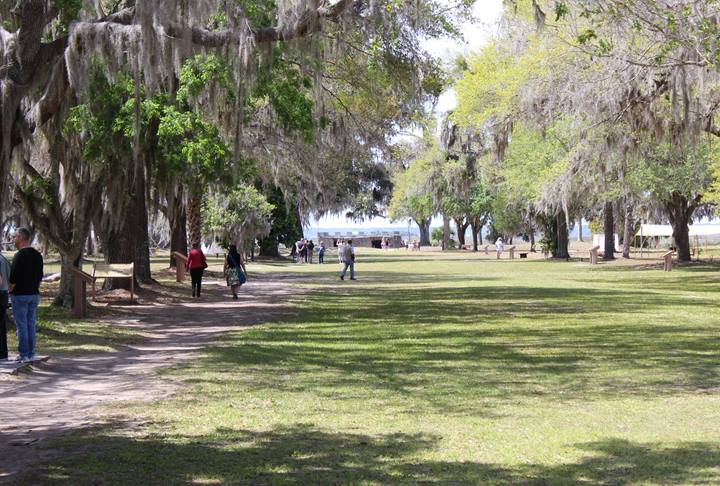
This is Broad Street today. On each
side of the street there are markers describing the remains of the
houses that used to be there. Broad Street was truly broad in
width. In the background is the remnant of the King's Magazine.
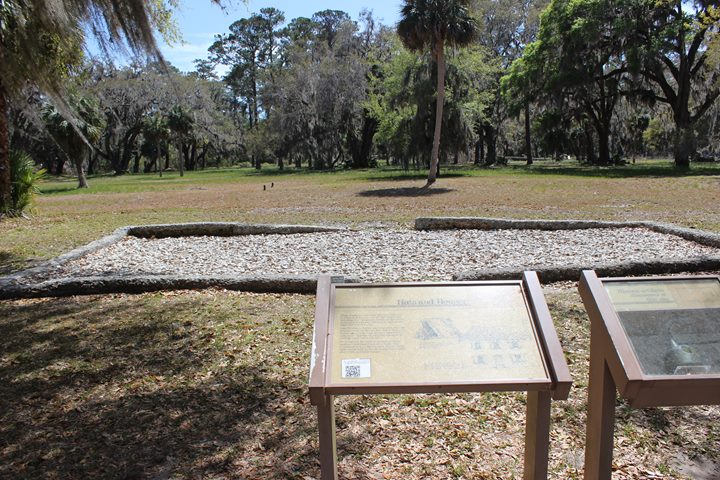
Today only the foundations of some of the
houses have been excavated. The houses were of tabby construction,
which used oyster shells and mortar made from the shells. Then the
inhabitants covered the tabby construction with wood to remind them of
houses in England. Oyster shells were in abundance as a
construction material, as the waste product from the native Americans
that lived in the area, who had sea food as a major part of their diet.
For a closer view of tabby construction see the Tabby Sugar Mill section
below.
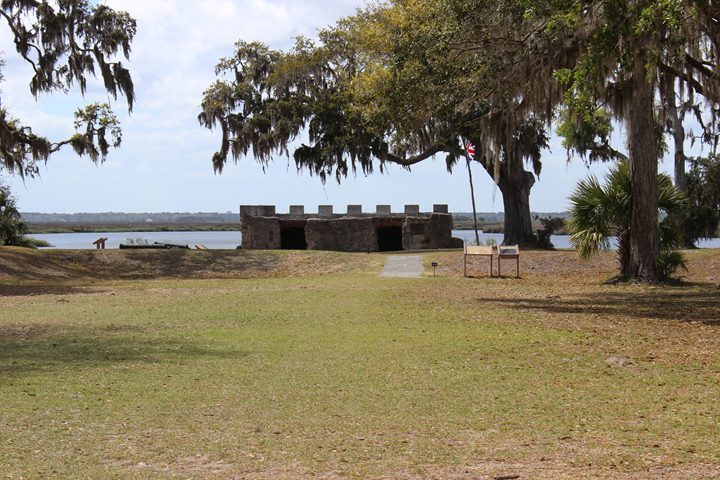
The King's Magazine behind the remains of
the earthen walls of the star fort.
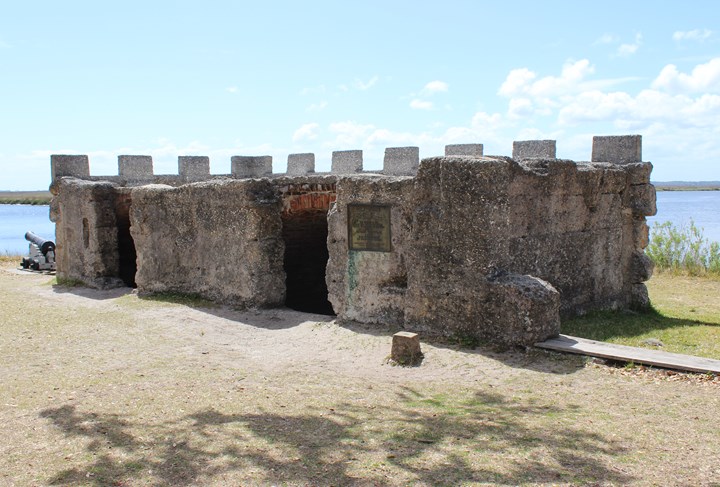
The magazine was of tabby construction with
a brick inner lining.
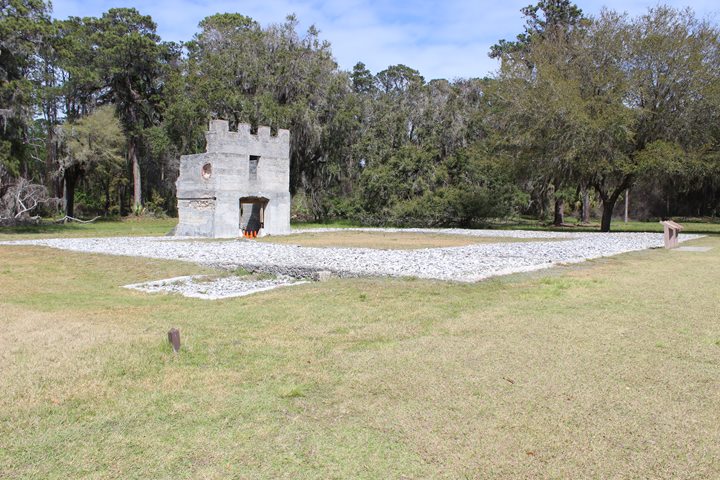
The soldiers' barracks with a portion of the
guard tower still standing.
Tabby Sugar Mill, St. Marys, GA
This tabby sugar mill was built in 1825 to produce sugar from sugar
cane grown in the area. Interestingly enough, it is located across
the road from the main gate to the Kings Bay Naval Base, home to eight
Trident submarines.
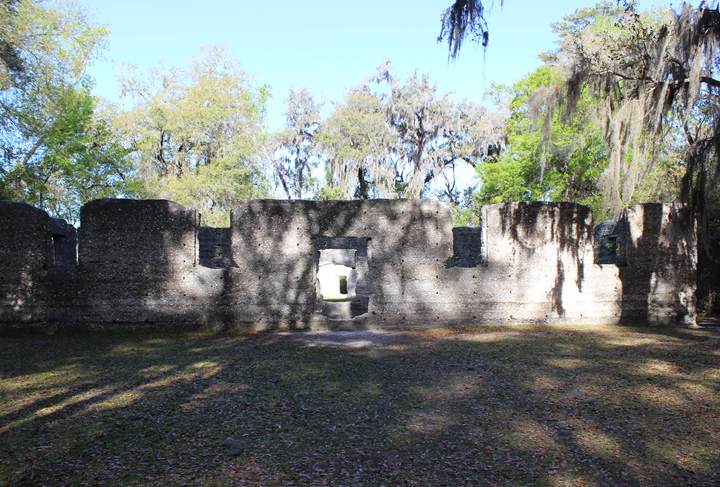
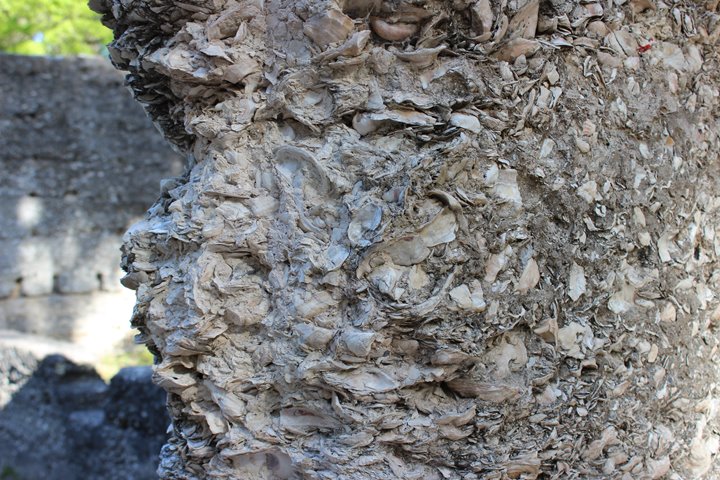
This gives a close-up of the tabby
construction. The oyster shells were burned to make a lime, and
then mixed with water, sand, and ash to make the mortar. The
mortar was mixed with oyster shells to make a building material. |


































































